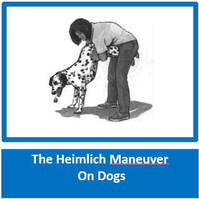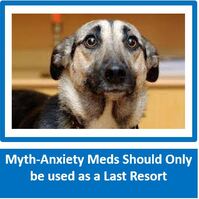Accidents happen! When they do, you want the absolute best care for your fur baby. Our Accident Only cover covers your pet for treatment relating to an accident, up to R25 000 per year.
https://www.genricpet.co.za/benefits/#Petinsurance
https://www.genricpet.co.za/benefits/#Petinsurance
Fear of the Vet
By Scotty Valadao – Friends of the Dog - Canine Behaviourist

Going to the vet can be a very stressful time, not just for the dog, but also the owner who is anticipating the dogs reactions - the dog picks up on the owners stress, which, in turn, escalates his own stress levels, so a vicious circle starts.
No fears should be taken lightly - to the dog the fear is very real and the long term affects of stress are extremely serious and can result in physical concerns. If the fear of the vet is not changed, what tends to occur is that the dog will start to exhibit further fears related to visiting the vet such as :-
Most Common Reasons Why This Occurs
Most cases of fear of the vet occur when dogs are only taken out in the car when they are going to the vet for the annual shots or for a medical concern, so the association is not good and tends to be remembered and associated with the car. With a dog that was fine at the vet previously, and suddenly starts to show fear, the odds are that there was a 'bad' experience at the vet which triggered the fear - this is called 'one event learning'.
Your Own Behaviour
Before you start the exercises below, a very important factor is your own behaviour. If you pander to the dog's fear, or show that you are concerned about the visit, the dog will immediately pick up same and his stress will escalate accordingly. Act in a happy manner, laugh or sing in the car - be very blasé about the whole experience, and the dog will immediately feel easier. Be aware that you do not hold onto the lead in a vice-like grip - the tension you feel really does travel down the lead to the dog, rather hold securely but with relaxed hands.
Break Desensitizing Procedure Into Stages
What we need to do is to break up the process that is normally undertaken when the dog goes to the vet into stages. Each and every stage is undertaken one at a time - done at a pace the dog can cope with - practised over and over until the dog is happy at that stage - at no time do you go further until the dog is totally happy in the current situation. An extreme example below, and remember that as each dog is different as is the level of fear and at what stage the fear appears - always start to change the process a step back from when your own dog shows fear - this will help to build confidence and reduce the fear.
Explain to Vet and Receptionists
Tell your vet and the receptionists what you are doing and explain the process you are undertaking, and I am sure that you will get full co-operation, especially if the dog is difficult when being examined. Break the following into sections as to what the individual dog can cope with, and only do one step at a time, remembering to praise and treat and ending up on a positive note, with perhaps a lovely smell around the parking area before popping back into the car.
Changing Dogs Perception of the Car
If you are dealing with a situation whereby the dog only gets out in the car when it is time to go to the vet, start to change this by just taking the dog out in the car for regular rides at least a few times a week. You can pop the dog in the car, go around the corner to the local park and let the dog have a sniff around, or even do the same at your local supermarket. Make this short excursion ever more rewarding for the dog by praising, offering treats, and even tossing the ball a few times (on lead!). The stress levels relating to the car will be reduced, and the dog will start to change its perception of being in the car a rewarding one, rather than something that causes fear and to be avoided.
Repeat the above until the dog is completely happy with being in the car and looking forward to the reward at the end of the car journey.
Arriving At the Vets Practice
Once the dog is happy with travelling in the car, then start taking the dog to the vet, but not inside. Let the dog sniff around outside on the grassed area that most vets have nowadays, at the same time praising the dog and offering treats. What we are doing, is slowly but surely lowering the dogs stress levels to this environment. Visits such as this should be practised over and over until the dog is completely relaxed outside the vet - when working with fear it is important to eliminate each and every trigger that is associated with the fear, and to go slowly at a pace the dog can easily cope with.
Entering Into Vet Practice
After smelling around outside, walk the dog in, offer some treats and let it smell around, and the majority of receptionists will come over and do the same - you have forewarned them.
Some dogs may not be able to cope with this and you may just get through the door before the dog wants to turn around and bolt outside. If this is the case, don't worry, just change the procedure a bit and walk in and out of the door, praising and treating all the time, until the dog is happy to take a few steps inside at a time. Don't flood the dog, rather do a few minutes at a time and repeat this as often as necessary, even going around the block and then coming back and repeating the same exercise. Gary Player once said ‘the more I practice the luckier I get’, so you get the idea of how often this needs to be done!
Fear Of Weighing Scale
Your next step is if the dog is scared of the weighing scale, to offer treats until the dog is happily sitting or standing on it. Yes, we are gradually eliminating all the 'triggers' associated with the vet that lead to stress!
Going Into Vets Consulting Room
When the above has all been successfully achieved, if the vet has a spare exam room, ask if you can walk in with the dog and then walk out again. Repeat until the dog is comfortable with the surroundings. Remember to close the door in this exercise, as the door will be closed during the vet exam. The majority of vets I work with will happily take this exercise a step further and get involved with the rehabilitation work by letting the dog walk into the room, patting the dog etc, so do ask your vet if he can co-operate with you on this point.
No fears should be taken lightly - to the dog the fear is very real and the long term affects of stress are extremely serious and can result in physical concerns. If the fear of the vet is not changed, what tends to occur is that the dog will start to exhibit further fears related to visiting the vet such as :-
- Fear of getting into the car
- Fear of people, and often fear of being touched, which can escalate into aggression.
- Fear of medications being given
- Other general fears can develop - living in fear is not fun for either dog or their person, and the sooner the fear is attended too the better, and always a good idea to get vet assistance and even that of a behaviourist.
Most Common Reasons Why This Occurs
Most cases of fear of the vet occur when dogs are only taken out in the car when they are going to the vet for the annual shots or for a medical concern, so the association is not good and tends to be remembered and associated with the car. With a dog that was fine at the vet previously, and suddenly starts to show fear, the odds are that there was a 'bad' experience at the vet which triggered the fear - this is called 'one event learning'.
Your Own Behaviour
Before you start the exercises below, a very important factor is your own behaviour. If you pander to the dog's fear, or show that you are concerned about the visit, the dog will immediately pick up same and his stress will escalate accordingly. Act in a happy manner, laugh or sing in the car - be very blasé about the whole experience, and the dog will immediately feel easier. Be aware that you do not hold onto the lead in a vice-like grip - the tension you feel really does travel down the lead to the dog, rather hold securely but with relaxed hands.
Break Desensitizing Procedure Into Stages
What we need to do is to break up the process that is normally undertaken when the dog goes to the vet into stages. Each and every stage is undertaken one at a time - done at a pace the dog can cope with - practised over and over until the dog is happy at that stage - at no time do you go further until the dog is totally happy in the current situation. An extreme example below, and remember that as each dog is different as is the level of fear and at what stage the fear appears - always start to change the process a step back from when your own dog shows fear - this will help to build confidence and reduce the fear.
- Fear starts getting into the car
- Fear starts as dog gets out of the car at parking area
- Dog is fearful of going through the door to the vet
- Dog fearful of getting onto weighing scale
- Dog cant cope with sitting with owner and keeps on trying to bolt through the exit door.
- Dog is fearful of any people going by
- Dog tries to run away when time to go into vets room
- Dog tires to hide or run when approached or when somebody want to pick do up onto exam table.
Explain to Vet and Receptionists
Tell your vet and the receptionists what you are doing and explain the process you are undertaking, and I am sure that you will get full co-operation, especially if the dog is difficult when being examined. Break the following into sections as to what the individual dog can cope with, and only do one step at a time, remembering to praise and treat and ending up on a positive note, with perhaps a lovely smell around the parking area before popping back into the car.
Changing Dogs Perception of the Car
If you are dealing with a situation whereby the dog only gets out in the car when it is time to go to the vet, start to change this by just taking the dog out in the car for regular rides at least a few times a week. You can pop the dog in the car, go around the corner to the local park and let the dog have a sniff around, or even do the same at your local supermarket. Make this short excursion ever more rewarding for the dog by praising, offering treats, and even tossing the ball a few times (on lead!). The stress levels relating to the car will be reduced, and the dog will start to change its perception of being in the car a rewarding one, rather than something that causes fear and to be avoided.
Repeat the above until the dog is completely happy with being in the car and looking forward to the reward at the end of the car journey.
Arriving At the Vets Practice
Once the dog is happy with travelling in the car, then start taking the dog to the vet, but not inside. Let the dog sniff around outside on the grassed area that most vets have nowadays, at the same time praising the dog and offering treats. What we are doing, is slowly but surely lowering the dogs stress levels to this environment. Visits such as this should be practised over and over until the dog is completely relaxed outside the vet - when working with fear it is important to eliminate each and every trigger that is associated with the fear, and to go slowly at a pace the dog can easily cope with.
Entering Into Vet Practice
After smelling around outside, walk the dog in, offer some treats and let it smell around, and the majority of receptionists will come over and do the same - you have forewarned them.
Some dogs may not be able to cope with this and you may just get through the door before the dog wants to turn around and bolt outside. If this is the case, don't worry, just change the procedure a bit and walk in and out of the door, praising and treating all the time, until the dog is happy to take a few steps inside at a time. Don't flood the dog, rather do a few minutes at a time and repeat this as often as necessary, even going around the block and then coming back and repeating the same exercise. Gary Player once said ‘the more I practice the luckier I get’, so you get the idea of how often this needs to be done!
Fear Of Weighing Scale
Your next step is if the dog is scared of the weighing scale, to offer treats until the dog is happily sitting or standing on it. Yes, we are gradually eliminating all the 'triggers' associated with the vet that lead to stress!
Going Into Vets Consulting Room
When the above has all been successfully achieved, if the vet has a spare exam room, ask if you can walk in with the dog and then walk out again. Repeat until the dog is comfortable with the surroundings. Remember to close the door in this exercise, as the door will be closed during the vet exam. The majority of vets I work with will happily take this exercise a step further and get involved with the rehabilitation work by letting the dog walk into the room, patting the dog etc, so do ask your vet if he can co-operate with you on this point.
The more the exercises above are practised, the happier and easier it will be for your dog when a vet visit is necessary. I have found that some dogs with fear of vets, are much happier being on the floor during a vet exam, so ask your vet if this is possible. If not, then consider adding a final phase of getting your dog used to being lifted up onto the table.
Use Of A Muzzle If Potential Aggression (rather Reactive Behaviour - dog is 'reacting' tp a perceived threat)
Additional tools that can be used are the use of a muzzle if you have a dog that may become reactive (click here for Muzzle article). I would suggest that you ensure the dog is happy at the vet using the exercises above and only bring in the desensitizing to the muzzle after this has been achieved - then repeat the exercises with the muzzle on the dog.
If the above is done on a regular basis, working at a pace with which a dog is comfortable, in no time at all you will have a dog that can cope with going to the vet. Good Luck and don't be nervous of asking for professional help if you feel needed!
Use Of A Muzzle If Potential Aggression (rather Reactive Behaviour - dog is 'reacting' tp a perceived threat)
Additional tools that can be used are the use of a muzzle if you have a dog that may become reactive (click here for Muzzle article). I would suggest that you ensure the dog is happy at the vet using the exercises above and only bring in the desensitizing to the muzzle after this has been achieved - then repeat the exercises with the muzzle on the dog.
If the above is done on a regular basis, working at a pace with which a dog is comfortable, in no time at all you will have a dog that can cope with going to the vet. Good Luck and don't be nervous of asking for professional help if you feel needed!





